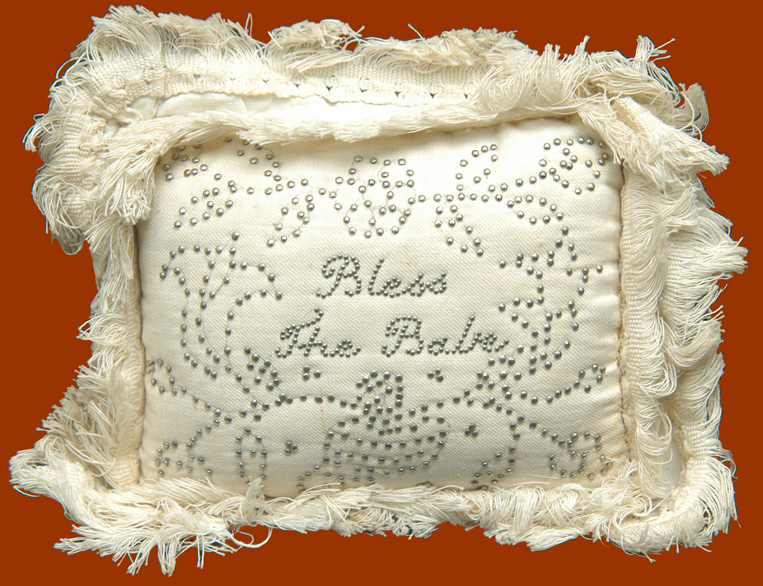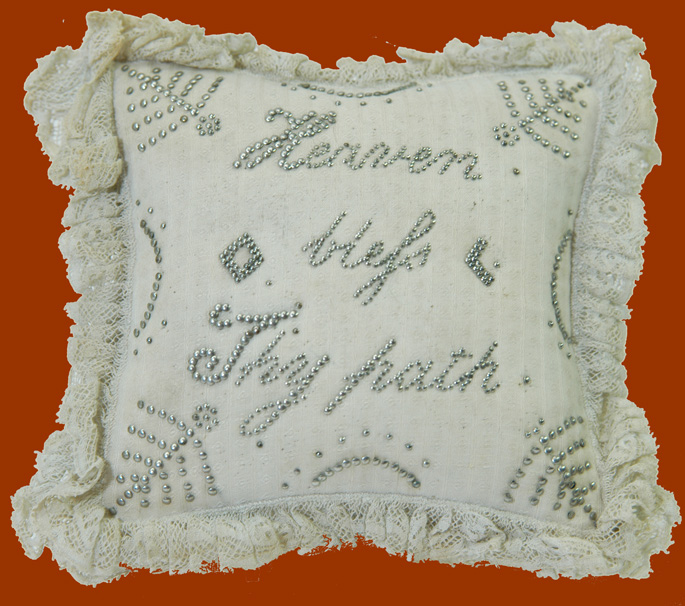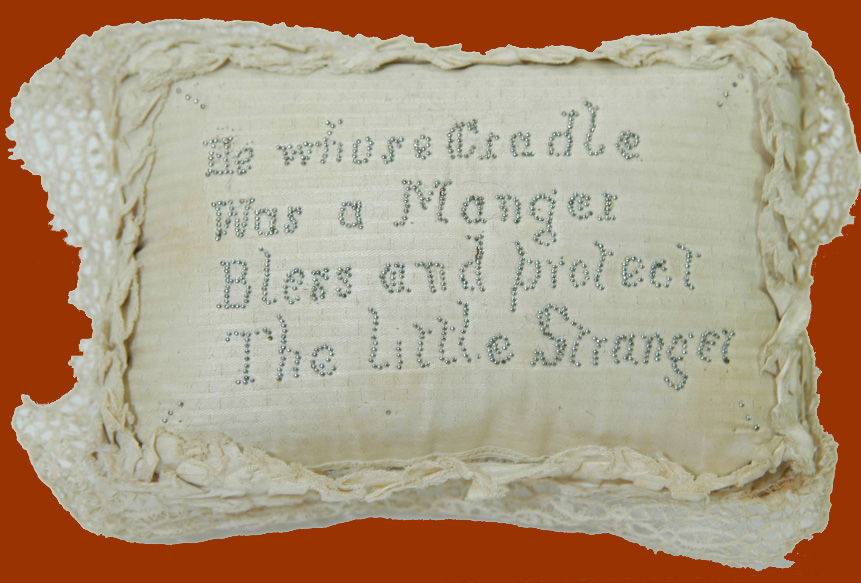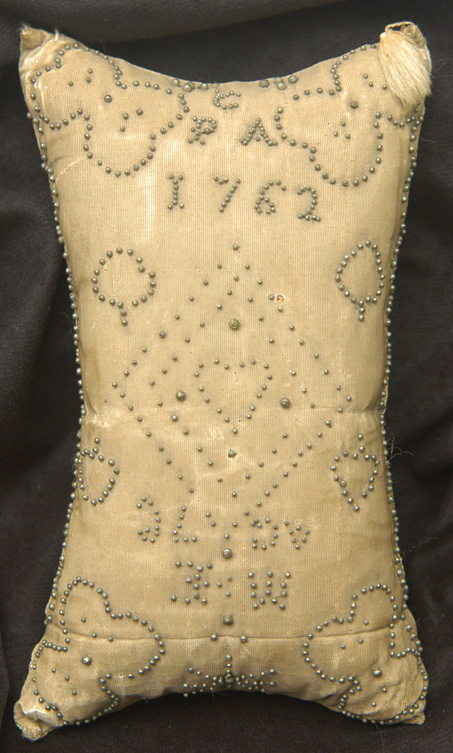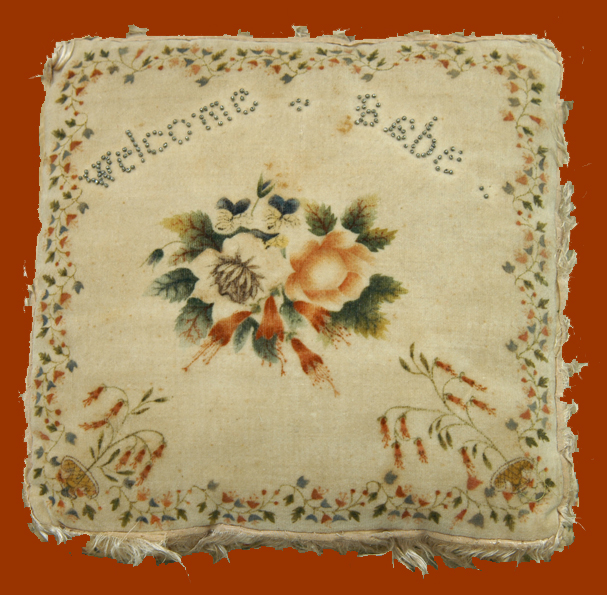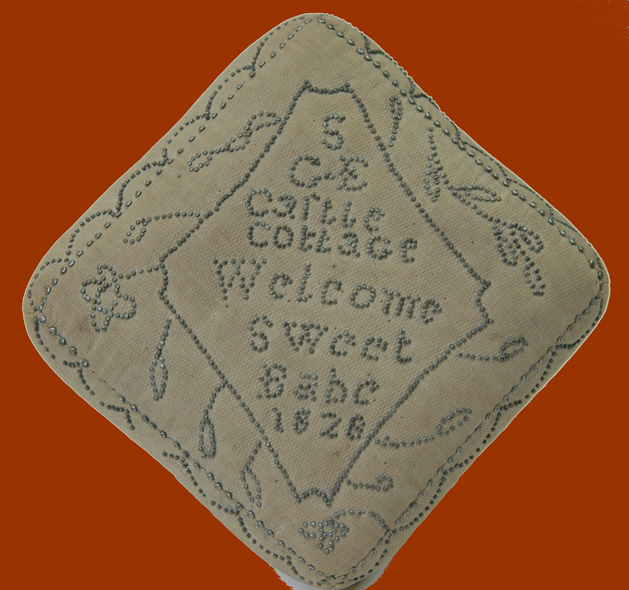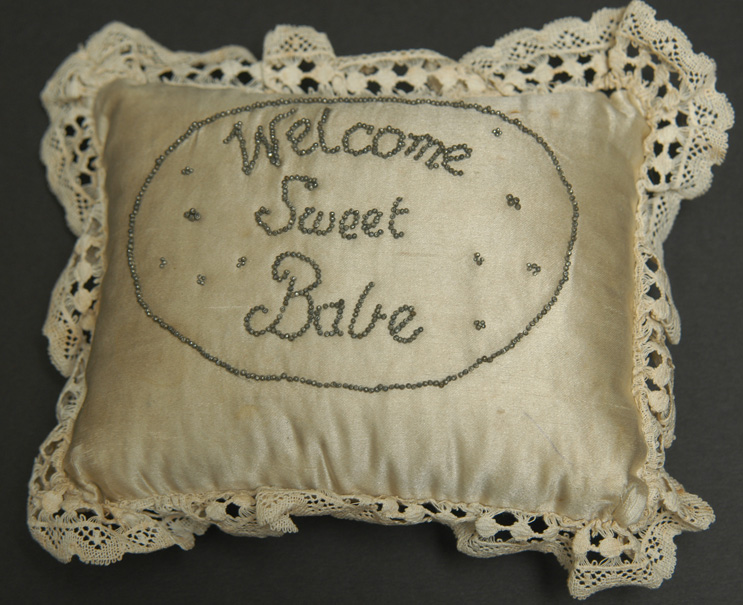Just for Fun
History of Christening or Birth Pillows
"'Welcome Little Stranger' was an apt greeting to the newborn babe, heralding his entry into this worldly domain. Handwrought pins spelling out these words on satin cushions were a popular baby present in the eighteenth century. Poor Robin, an English almanac, advised: 'Pincushions and such other knacks. A childbed woman always lacks.' Hung on the front door, these pincushions announced the new arrival to friends and neighbors. . . . .
"In addressing the newborn as 'little stranger,' our Colonial fathers, revealed their deep-rooted attitude toward childbirth. Pregnancy was never spoken of in polite society; it was not even acknowledged within the family. When delivery was imminent, children were foisted on relatives and friends, and to everyone's surprise, a 'little stranger' suddenly appeared. A baby was not given birth to; according to Anna Green Winslow's diary, 'About 8 in the evening, Dr. Lloyd, brought little master to town.'"1
These pillows or cushions are commonly referred to as christening pillows or cushions. Steel pins form the sentiments such as:
-
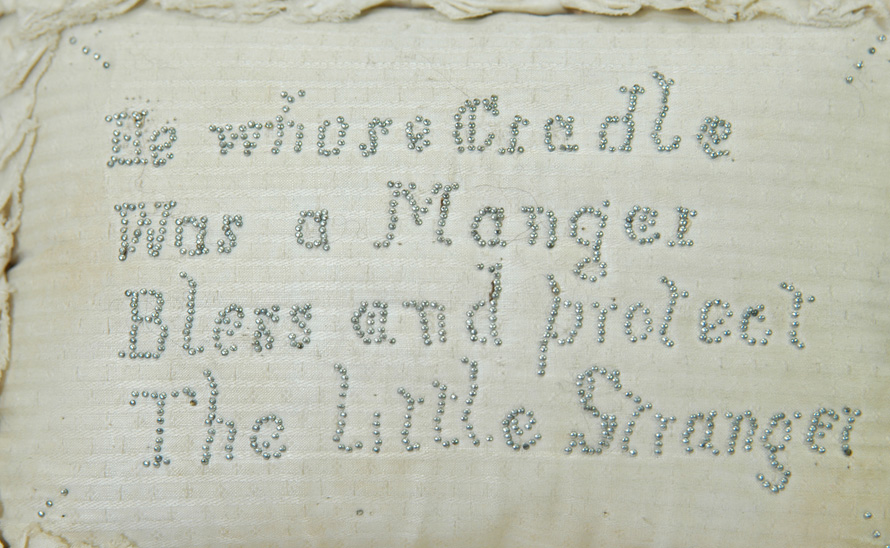 He whose Cradle
He whose Cradle
Was a Manger
Bless and protect
The little Stranger
The pins are handmade in two parts, a wire was drawn, straightened, cut, one end was sharpened. and the other was ground to accept the the head. Then a handmade head was added (if you look with a loupe you can see that the head fits like a collar around the straight pin). Finally the entire pin was polished and the pins were placed in a paper packet for sale. By 1776, American pin factories were turning out 5000 pins per day.2
An 18th or 19th century pillow should be completely hand sewn and is usually an ivory colored silk or satin. 18th century pillows usually have no lace but a hanging ribbon from which they were hung from the front door. By the early 19th century, these baby gifts were cherished indoors and instead of having hanging ribbons, they often have ruffles and/or lace around the edges. Early ones are stuffed with straw. Because many mothers used the cherished pins that decorated pillows, these pillows are rare, especially if made before 1800.
1Brant, Sandra & Cullman, Elissa, Small Folk A Celebration of Childhood in America. E.P. Dutton, New York, 1980. 43.
Please see the Christening Pillows currently in inventory on the Textiles page.

